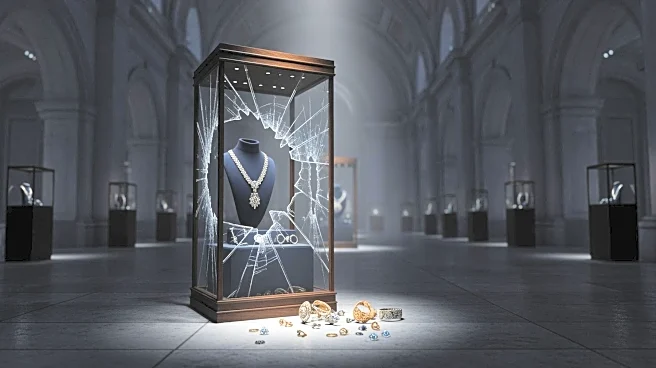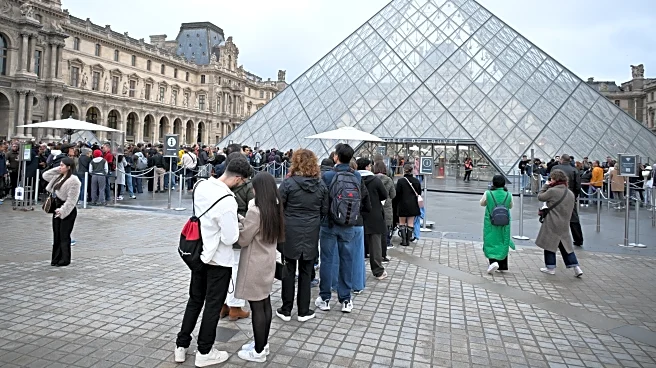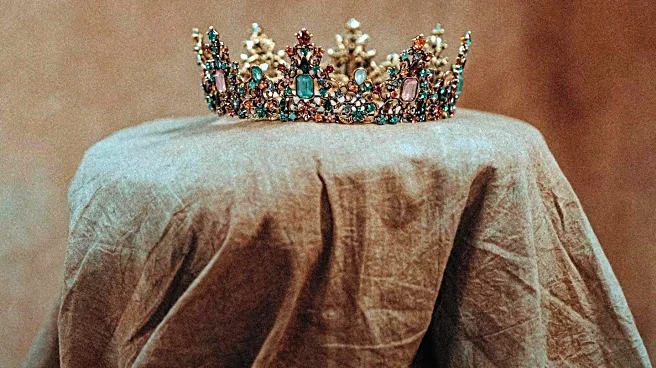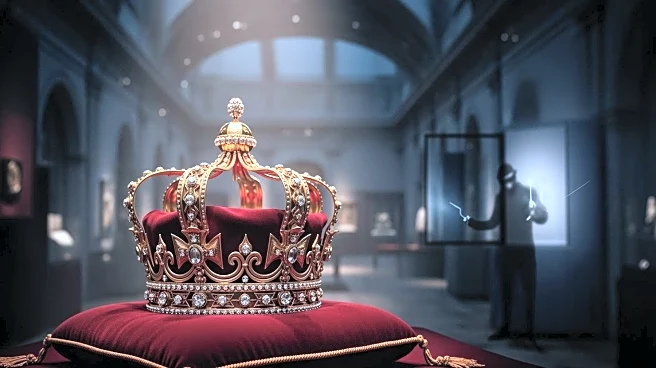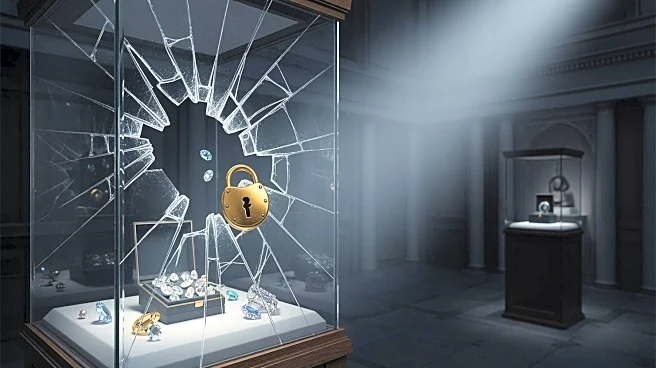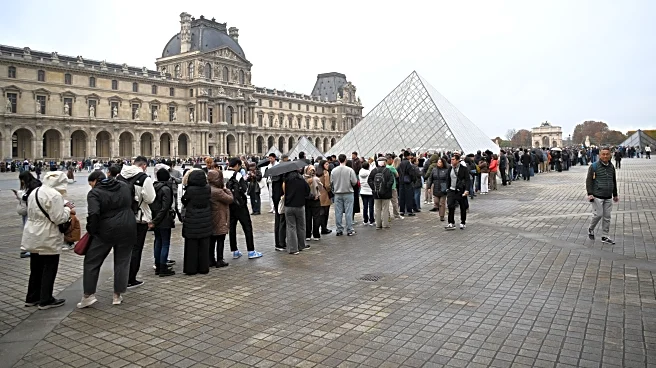What's Happening?
A daring heist at the Louvre museum in Paris resulted in the theft of jewelry valued at 88 million euros ($102.63 million). The theft, described as a national humiliation by some politicians, involved
four individuals who used a crane to break into the museum and steal items from a gallery of royal jewelry. The stolen items include a tiara and earrings from the sets of Queen Marie-Amélie and Queen Hortense. The crown of Empress Eugenie was found outside the museum, apparently dropped during the escape. The Paris public prosecutor, Laure Beccuau, emphasized the economic and historical damage caused by the theft.
Why It's Important?
The theft at the Louvre highlights significant security concerns at one of the world's most famous museums. The economic impact of the stolen jewelry is substantial, but the historical loss is even more profound, as the items are irreplaceable pieces of cultural heritage. This incident may prompt museums worldwide to reassess their security measures to prevent similar occurrences. The theft also raises questions about the effectiveness of current security protocols and the need for enhanced surveillance and protection of valuable artifacts.
What's Next?
In response to the heist, the Louvre and other museums may implement stricter security measures to protect their collections. Law enforcement agencies are likely to intensify their efforts to recover the stolen items and apprehend the perpetrators. The incident may also lead to increased collaboration between international law enforcement agencies to track and recover stolen art and artifacts. Additionally, there may be a push for technological advancements in museum security systems to prevent future thefts.


